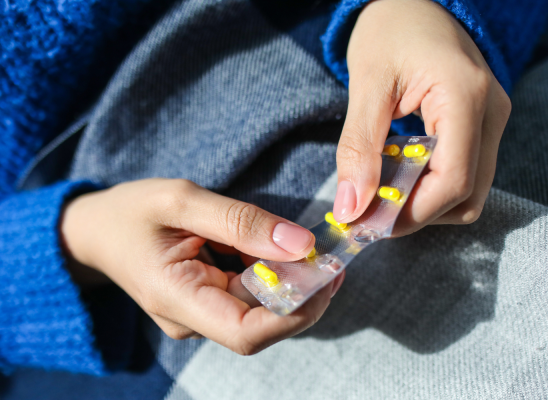Dialectical Behavior Therapy for Trichotillomania
Online test
Find out the severity of your symptoms with this free online test
 Trichotillomania or compulsive hair pulling disorder, is often thought to be an unconscious or automatic behavior, whereby the individual may be unaware he or she is pulling their hair until they have already started. Once the action has been initiated, the person finds it difficult to stop, despite feeling ashamed or guilty and being aware of the potentially damaging effect it might have on their hair follicles. This can then perpetuate the cycle whereby the person may then further experience the urge to pull in response to the shame and guilt that goes with this condition. When hair pulling is done in a compulsive manner which the person is unable to stop, it is no longer considered a bad habit, and is referred to as trichotillomania - classified as a form of impulse control disorder. There is a high co-morbidity of trichotillomania in individuals that have obsessive compulsive disorder (OCD) and body dysmorphic disorder. Compulsive hair pulling has also been found to be present in individuals with anxiety disorders and eating disorders and utilized as a means of regulating emotions to promote self-soothing and distractions (in maladaptive behaviors). Dialectical Behavior Therapy (DBT), which has been seen to be effective with these psychological conditions is thterefore thought to be applicable in the treatment of trichotillomania as well.
Trichotillomania or compulsive hair pulling disorder, is often thought to be an unconscious or automatic behavior, whereby the individual may be unaware he or she is pulling their hair until they have already started. Once the action has been initiated, the person finds it difficult to stop, despite feeling ashamed or guilty and being aware of the potentially damaging effect it might have on their hair follicles. This can then perpetuate the cycle whereby the person may then further experience the urge to pull in response to the shame and guilt that goes with this condition. When hair pulling is done in a compulsive manner which the person is unable to stop, it is no longer considered a bad habit, and is referred to as trichotillomania - classified as a form of impulse control disorder. There is a high co-morbidity of trichotillomania in individuals that have obsessive compulsive disorder (OCD) and body dysmorphic disorder. Compulsive hair pulling has also been found to be present in individuals with anxiety disorders and eating disorders and utilized as a means of regulating emotions to promote self-soothing and distractions (in maladaptive behaviors). Dialectical Behavior Therapy (DBT), which has been seen to be effective with these psychological conditions is thterefore thought to be applicable in the treatment of trichotillomania as well.
What is DBT?
The term "dialectical" means a synthesis or integration of opposites. DBT is thus between accepting undesirable behaviors, while still acknowledging the need for the behaviors to change. Even the skills and strategies taught in DBT are balanced in terms of acceptance and change. For example acceptance-oriented mindfulness skills, versus change-oriented emotion regulation skills. DBT is a cognitive behavioral treatment that was originally developed to treat chronically suicidal individuals diagnosed with borderline personality disorder (BPD). But research has shown that it is also effective in treating a wide range of other disorders such as substance dependence, depression, post-traumatic stress disorder (PTSD), and eating disorders.
How does DBT work?
In DBT sessions you will look at practical strategies to respond to distressing thoughts and emotions. Problems are addressed in sessions in an order of hierachical importance as follows:
Stage 1: firstly behavior that is self-destructive and out of control is addressed. This includes suicidal and self-harming behaviors, and drug and alcohol abuse. The goal in this first stage is to help the client regain control of these destructive behaviors to enable the client to work on other goals.
Stage 2: This is when clients present in therapy as having an element of control over the undesirable behavior, but the act of control is emotionally taxing and therefore unsustainable. The client is empowered to embrace their negative emotional experiences, whilst still being willing to identify strategies to change the way they respond the these negative emotions in a way that promotes wellbeing.
Stage 3: Clients who have developed an awareness of their negative thought patterns are now guided to defining what they want their lives to stand for and what their life goals are based in these values. The goal of this stage is to accept a life that encompasses both successes and failures, happiness and unhappiness, but to find contentment in working toward living a life that is congruent with the individuals values.
Stage 4: For some people, a fourth stage is needed: finding a deeper meaning through a spiritual existence.
Is it Effective?
Research has shown DBT to be effective in reducing suicidal behavior, non-suicidal self-injury, psychiatric hospitalization, treatment dropout, substance use, anger, and depression and improving social and global functioning. But is it effective in the treatment of trichotillomania? While DBT is mostly targeted at clients with suicidality, as a type of CBT there many aspects that can be effective in the treatment of trichotillomania. For example stage 2 may look at mindfulness skills, while stage 3 and 4 is closely linked to the section in the TrichStop.com online program that explores values and life goals. We also incorporate acceptance and commitment therapy (ACT), which is often used in conjunction with DBT. CBT as an overall frame of reference has been proven to be effective in the treatment of BFRBs in general, but skill and expertise from the therapist and commitment from the client is required for effectiveness to be maximised.
Online test
Find out the severity of your symptoms with this free online test
Start your journey with TrichStop
Take control of your life and find freedom from hair pulling through professional therapy and evidence-based behavioral techniques.
Start Now



